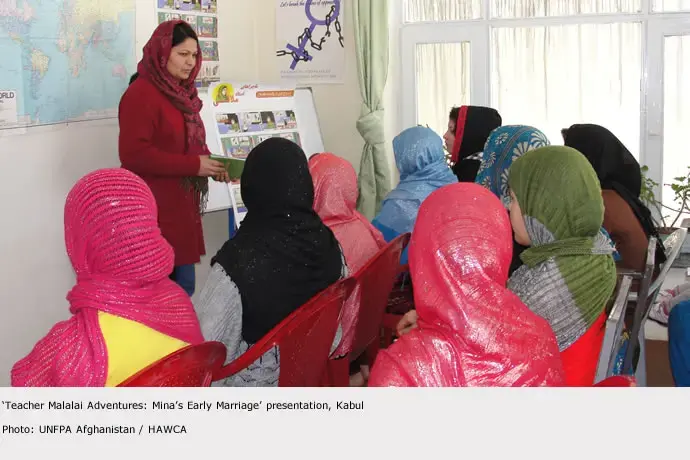Overview
Child marriages are illegal but widespread in Afghanistan. Afghanistan’s minimum age of marriage for girls is 16 or 15 well below the internationally recommended standard of 18. They mainly happen in rural areas, especially along the borders with Pakistan.
Child marriages are usually aimed at strengthening ties with rival families and tribes, as part of deals or to settle debts and disputes. Poor families often end up selling daughters for large dowries from wealthy people and the husbands are usually much older.
Decisions to sell off girls for marriage are made by men, with wives, mothers, sisters and the girls themselves having little or no say. Nearly a tenth of Afghan adolescent females (aged 15–19) give birth every year as a consequence of early marriage and lack of access to reproductive health information and services.
Girls and adolescents are far likelier to die of causes related to pregnancy than their older sisters. In Afghanistan the pregnancy-related mortality ratio of women aged 15 to 19 is estimated at 531 deaths per 100,000 live births compared to 257 deaths per 100,000 live births for young women between the ages of 20 and 24 years.
Furthermore, a quarter of women suffering from obstetric fistula, which can condemn women to ill-health and ostracism, were below 16 years of age when they married. As chair of the United Nations taskforce on early marriage (also including UNICEF, UN Women, UNDP and UNAMA), UNFPA leads grassroots campaigns amongst a wide, largely illiterate audience, using cartoons and other relevant communication materials to talk about the risks of early marriage including its health consequences in five provinces, working closely with communities, religious leaders and youth.




